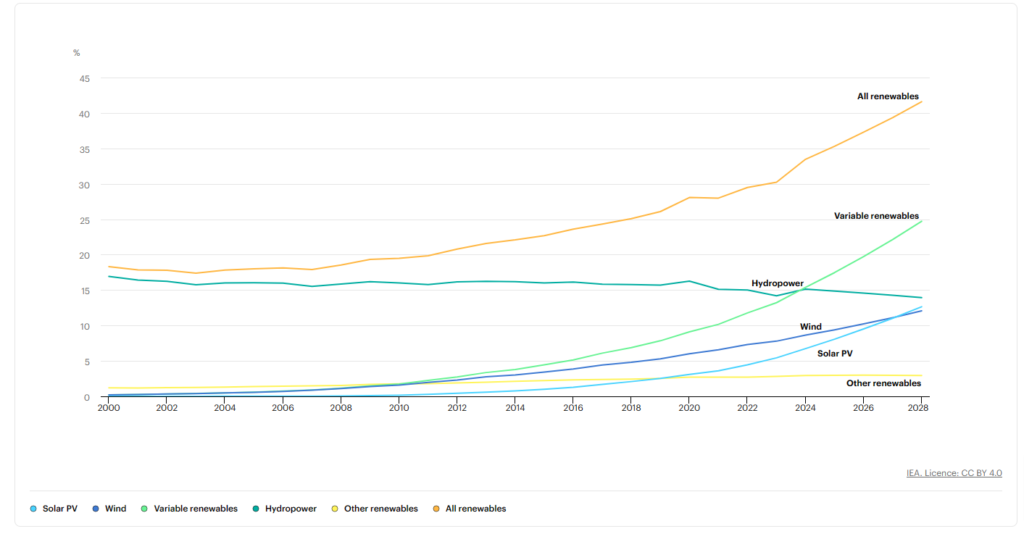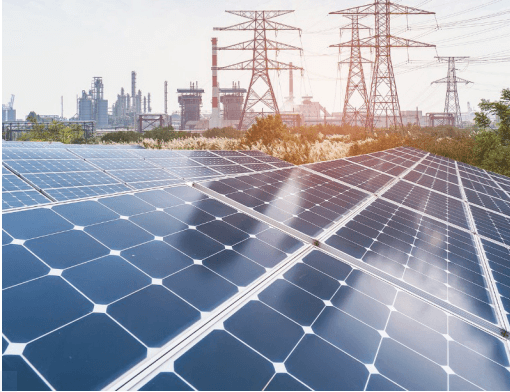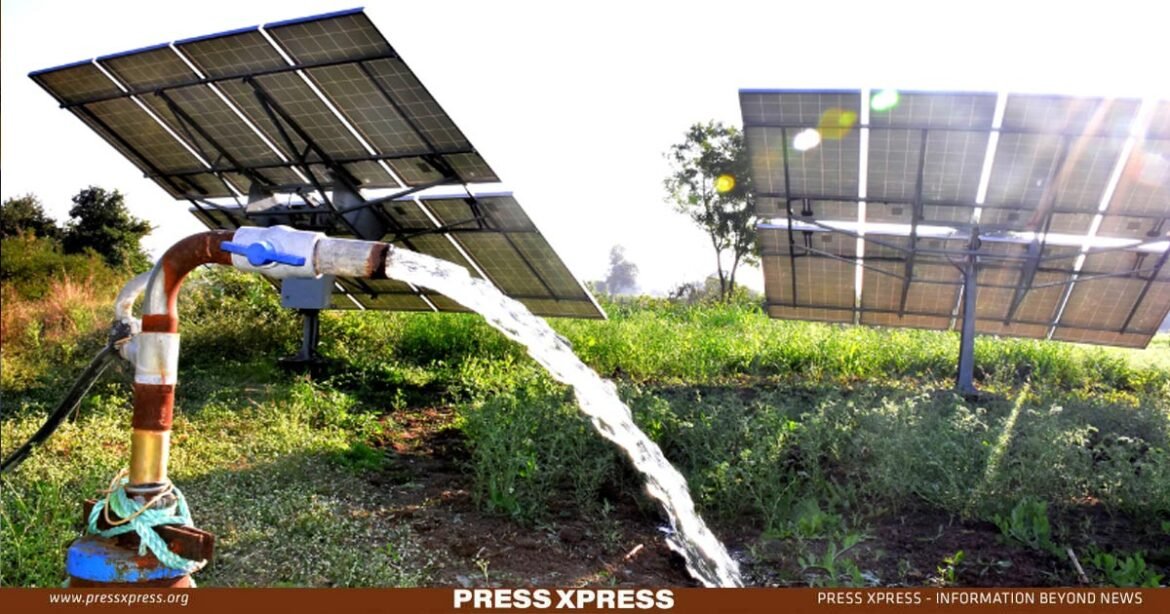Renewable energy and energy efficiency are two distinct, yet related subjects. Both ‘renewables’ and ‘energy efficiency’ are crucial for the long-term survivability and sustainability of the planet. While the first will allow us to reduce our carbon footprint and positively impact climate change, the latter will allow us to safeguard greater yields from existing energy infrastructure.
You Can Also Read: GLOBAL GATEWAY: EU AND BANGLADESH JOIN FORCES WITH €400 MILLION PACT FOR CLEAN ENERGY
As the nonrenewable energy sources begin running out; it is imperative that a careful examination of the advantages and challenges associated with both renewable energy and energy efficiency is undertaken. Not only will this facilitate a smooth transition from nonrenewable to sustainable and renewable energy sources, it will guarantee the efficient use of existing energy infrastructure.

Renewable Energy
Globally, the share of renewable energy sources is increasing. This trend is precipitated by the fact that non-renewable energy sources are slowly being depleted; as well as the large carbon footprint and ecological impact associated with non-renewable energy sources.

While the initial setup costs for renewable energy can be high, the long-term savings are worth it. Without the need for expensive fossil fuels and with lower maintenance costs, renewable energy can help us save money in the long run.

But like any new technology, renewable energy faces some challenges. The sun doesn’t always shine, and the wind doesn’t always blow, which can make our energy supply a bit unpredictable. Hydropower can cause climate and agricultural issues. Thus, we need better storage solutions to keep the energy flowing smoothly, and that can be costly. Plus, some areas might not have enough sunlight or wind to make renewable energy a viable option.
Energy Efficiency
Globally, countries recognize the crucial role of energy efficiency and have started implementing diverse policies and initiatives to enhance it. The American Council for an Energy-Efficient Economy (ACEEE) assesses the energy efficiency of the world’s largest economies, including Australia, Brazil, Canada, China, and others.

The ACEEE International Energy Efficiency Scorecard ranks these economies based on their energy efficiency policies and programs. Thirty-one energy efficiency indicators are analyzed across four categories: buildings, industry, transportation, and national effort.
The rankings are determined by scoring out of 100 possible points, with 36 different matrics being used(See Table for reference). Countries worldwide recognize the importance of energy efficiency and have begun implementing various policies and initiatives to enhance it, as energy efficiency plays a crucial role in addressing energy-related climate change issues.
ACEEE Metrics for all sectors used to Calculate Energy Efficiency Score
| Metric | Type | Points | |
| National efforts | 2018 | 2022 | |
| Change in energy intensity between 2013 and 2018 | Performance | 6 | 6 |
| Spending on energy efficiency | Policy | 5 | 5 |
| Energy savings and climate goals | Policy | 3 | 3 |
| Efficiency of thermal power plants | Performance | 3 | 3 |
| Tax credits and loan programs | Policy | 2 | 2 |
| Spending on energy efficiency RD&D | Policy | 2 | 2 |
| Size of the energy service company (ESCO) market | Performance | 2 | 2 |
| Water efficiency policy | Policy | 1 | 1 |
| Data availability | Policy | 1 | 1 |
| Buildings | |||
| Appliance and equipment standards | Policy | 5 | 5 |
| Residential building codes | Policy | 3 | 3 |
| Commercial building codes | Policy | 3 | 3 |
| Building retrofit policies | Policy | 4 | 4 |
| Building rating and disclosure | Policy | 2 | 2 |
| Appliance and equipment labeling | Policy | 2 | 2 |
| Energy intensity in residential buildings | Performance | 3 | 3 |
| Energy intensity in commercial buildings | Performance | 3 | 3 |
| Industry | |||
| Energy intensity of the industrial sector | Performance | 6 | 6 |
| Voluntary energy performance agreements with manufacturers | Policy | 3 | 4 |
| Policy to encourage energy management | Policy | 2 | 3 |
| Minimum efficiency standards for electric motors | Policy | 2 | 2 |
| Mandate for plant energy managers | Policy | 2 | 2 |
| Mandatory energy audits | Policy | 2 | 2 |
| Investment in manufacturing research and development (R&D) | Policy | 2 | 2 |
| Share of combined heat and power (CHP) in total installed capacity | Performance | 2 | 1 |
| Policy to encourage CHP | Policy | 2 | 1 |
| Agriculture energy intensity | Performance | 2 | 2 |
| Transportation | |||
| Fuel economy standards for light-duty vehicles | Policy | 4 | 4 |
| Fuel economy of light-duty vehicles | Performance | 3 | 3 |
| Electric vehicle sales share* | Performance | – | 3 |
| Vehicle miles traveled per capita | Performance | 3 | 3 |
| Fuel economy standards for heavy-duty tractor trucks | Policy | 3 | 3 |
| Energy intensity of freight transport | Performance | 3 | – |
| Freight transport per unit of economic activity | Performance | 2 | 2 |
| Smart freight initiatives | Policy | 1 | 1 |
| Investment in rail transit versus roads | Policy | 3 | 3 |
| Use of public transit | Performance | 3 | 3 |
| Total | 100 | 100 | |
The benefits of energy efficiency are hard to ignore. Over time, it can significantly lower energy costs for both individuals and industries. When buildings and vehicles are more efficient, they need less energy to operate, which means direct savings and reduced greenhouse gas emissions. On a larger scale, improving energy efficiency can also contribute to national energy security by reducing the overall demand for energy and the need for energy imports.
But there are some challenges to overcome. The initial costs of implementing energy-efficient technologies can be steep, and while the economic benefits are substantial, they often take time to show up. Plus, energy efficiency improvements need to keep up with new technologies and standards to stay effective, and the pace of technological change can create disparities in how quickly different sectors or regions can adopt these measures.

Comparative Analysis
Renewable energy and energy efficiency are like two peas in a pod when it comes to reducing global energy consumption and fighting climate change. Each one brings something special to the table in the world of energy.
Renewable Energy’s Superpower:
Renewable sources are becoming more and more cost-effective thanks to technological advancements and the ability to scale up. By adopting renewable energy, we’re boosting sustainability and supporting environmental goals with cleaner energy solutions.
Energy Efficiency’s Secret Weapon:
By improving the way we use energy, efficiency measures help with economic stability, reduce environmental impact, and make our lives better through improved air quality and lower energy bills.
The Dynamic Duo: Synergy and Integration
When renewable energy and energy efficiency join forces, they create a powerful approach to managing energy. Combining these two strategies can lead to a more flexible energy system, lower energy costs, and a faster transition to a low-carbon economy. Using energy efficiently not only works well with the variability of renewable sources but also maximizes the usefulness of each unit of energy produced by these clean sources.
Overcoming Obstacles and Moving Forward
While integrating renewables with energy efficiency strategies is a solid path toward reducing carbon emissions, it also comes with challenges. It requires significant upfront investment and the development of supportive policies and technology innovations. Policies need to encourage both renewable energy development and the implementation of energy-efficient technologies.
To achieve sustainability and energy independence goals, it is imperative to make the most of the synergies between renewable energy and energy efficiency. By taking a balanced approach that plays to the strengths of each, we can accelerate progress towards global energy and climate objectives.
Conclusion
Renewable energy and energy efficiency must be integrated for sustainable development. They’re not just about reducing carbon emissions; they also help us rely less on non-renewable resources. Renewables are like the superheroes of energy, providing clean, endless power from natural sources. And energy efficiency? It’s like the sidekick that minimizes waste by optimizing how we use that power.
Together, they have the potential to revolutionize energy systems worldwide, making them more sustainable and less harmful to the environment. Future policies should support both approaches to maximize their benefits. By integrating these strategies, societies can achieve significant environmental, economic, and social gains, steering us toward a resilient and sustainable energy future.


